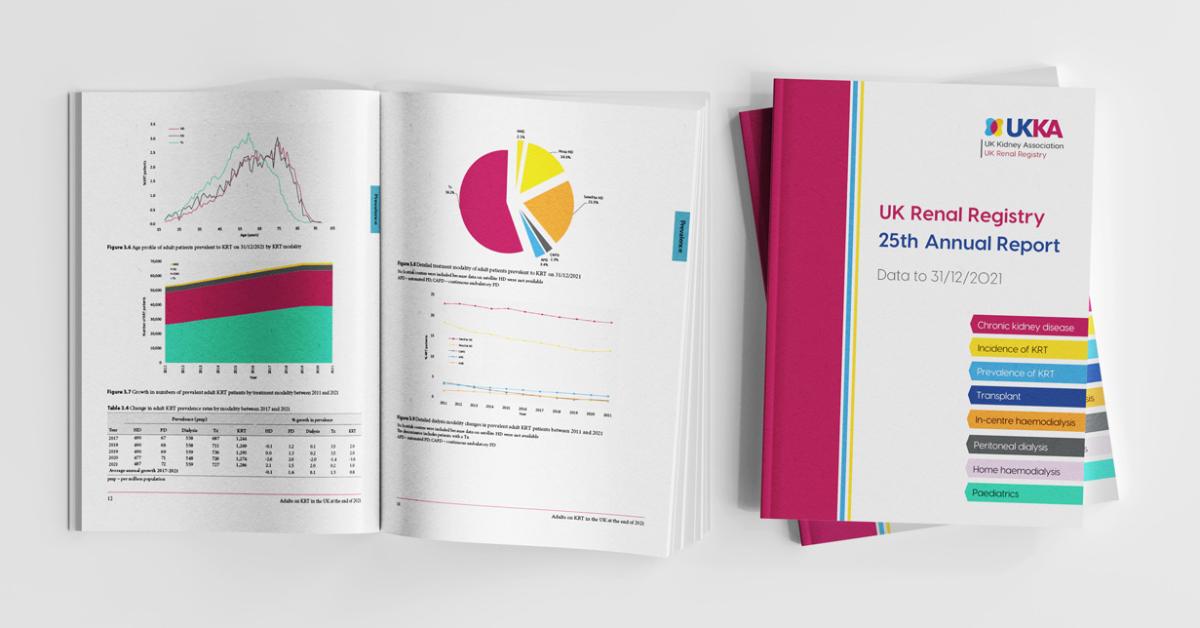Patient Information
Lupus is an auto-immune disease, which means that the immune system is dysfunctional and attacks the body’s own tissues. Lupus can affect any part of the body including the skin, joints, blood vessels, and organs such as the heart and kidneys. People with lupus have symptoms that can range from mild to severe, and symptoms can come and go as people experience “flares” or times when their condition worsens. Some of the most common symptoms of lupus include severe fatigue, painful muscles or joints, flu-like symptoms, and skin rashes.
When the immune system attacks the kidneys and causes inflammation or damage, and this is called ‘lupus nephritis’. About one in three people with lupus develop lupus nephritis, usually within the first five years after diagnosis. For some people, lupus nephritis is detected at the same time as the diagnosis of lupus is made, but for others lupus nephritis develops later. Younger patients and people of Black or Asian ancestry are more likely to develop lupus nephritis.
The symptoms of lupus nephritis are similar to other conditions which affect the same parts of the kidneys (see “How the disease works” section). These symptoms include swelling of the feet, legs, and around the eyes (called oedema), loss of appetite, increased blood pressure, and protein and blood in the urine. Blood or protein in the urine can change how it looks, but it may only be noticeable under a microscope. This is why it is important people with lupus have regular urine tests so that any inflammation in the kidneys can be found early and treated before more damage is done.
In most cases, treatments are effective and kidney function is preserved. However, for some patients, the kidneys are damaged and less able to work properly. Some patients also have a successful treatment of their lupus nephritis, but then experience a ‘flare’ or ‘relapse’ and need further treatment.
Doctors use a classification system to divide lupus nephritis into 6 stages, from least severe (class 1) to most severe (class 6). A description of the different classes is given below:
|
Class |
Description |
|
1 |
Minimal damage (often only viewable under a special microscope) |
|
2 |
Some inflammation of the kidney |
|
3 |
Damage to less than 50% of the blood vessels of the kidney |
|
4 |
Damage to more than 50% of the blood vessels of the kidney |
|
5 |
Thickening of kidney structures and immune deposits in the blood vessels |
|
6 |
Damage to more than 90% of the blood vessels in the kidney |
The aim of treatment
The aim of treatment is to dampen down the inflammation and stabilize or improve kidney function. For lupus nephritis (especially class III, IV or V), ‘immunosuppressive’ drugs are used. Common immunosuppressive drugs include steroids, mycophenolate mofetil (MMF), rituximab and cyclophosphamide. Hydroxychloroquine is another important part of treatment for many patients with lupus. These drugs are also used to treat other features of lupus such as arthritis but often the diagnosis of lupus nephritis means that treatment needs to be increased to control the inflammation.
Steroids
Steroids for lupus nephritis can either be given as intravenous injections directly into a vein over 1-3 days or as tablets (prednisolone) taken daily. Sometimes a combination of injected and tablet steroids is used.
Mycophenolate mofetil (MMF)
Mycophenolate is a tablet given on a daily basis. The dose of the mycophenolate is built up over a few weeks and then monitoring blood tests are needed to check that the drug is not causing any side effects.
Rituximab
Rituximab is a biological drug which is given in hospital, through a drip in a vein. This is known as an intravenous infusion. The infusions are repeated when it is starting to wear off or to prevent a flare-up. This can be anything from six months to a few years later. It works by removing B cells which are involved in producing auto-antibodies which cause inflammation in lupus.
Cyclophosphamide
Cyclophosphamide is a powerful medication used for reducing inflammation and is also usually given intravenously into the vein. Your doctor will explain how many doses of cyclophosphamide you are likely to need. These are usually given every fortnight over a period of three months. Antibiotics may be prescribed for six months after the start of cyclophosphamide to reduce the risk of getting infections during and straight after the treatment.
Voclosporin
Voclosporin is a newer immunosuppressant designed specifically for lupus nephritis to stop it from worsening. It is used together with mycophenolate mofetil (MMF). Voclosporin is a calcineurin inhibitor. Calcineurin is an enzyme that activates a type of immune cell called ‘T-cells’ to start working, so voclosporin works by reducing the amount of calcineurin in the body, which results in less T-cell activity. This then reduces the amount of inflammation in the kidneys that causes the symptoms of lupus nephritis. Voclosporin is administered as an oral tablet, typically three capsules twice a day. It is given together with MMF.
Dialysis & kidney transplant
Some patients develop permanent kidney damage due to their lupus nephritis. If this damage cannot be improved with medication, then dialysis or transplant may be considered.
Dialysis
In general, people with lupus do as well on dialysis as those with kidney failure due to other causes. There is some added risk of infection from immunosuppressive drugs when someone is on dialysis; however, this is carefully monitored. Usually, lupus becomes less active at this stage, and it is often possible to gradually reduce and sometimes stop immunosuppressive drugs once someone with lupus is on regular dialysis treatment.
Kidney transplant
Overall, people with lupus do very well after a kidney transplant. The risks of lupus recurring in a transplant kidney are very low (less than 5%) and in general, transplant medications also keep other lupus symptoms under control. Some patients with lupus also have an increased risk of clotting. Your kidney doctor will discuss with you whether this might affect a transplant kidney and what steps can be taken to help.
How long does treatment last?
Most treatment can be given as an out-patient and will need to be continued for a period of years (often three years minimum and sometimes lifelong).
Immunosuppressive drugs, like any other drug, can cause side effects and your doctor and lupus nurse will talk to you about these.
Monitoring progress
Regular blood tests, urine tests and blood pressure checks are carried out to look at kidney function, levels of inflammation, response to treatment and to monitor for side effects from treatments. These results will be discussed with you at clinic appointments.
A kidney biopsy may be needed to look at the response to treatment or if the inflammation becomes active again.
What else can help?
In addition to immunosuppressive drugs the following steps are also important:
- Keeping blood pressure under control (usually with tablets such as ‘ACE inhibitors’ or related drugs)
- Preventing infections - it is advisable to avoid sources of infection where possible and it is generally safe and recommended to have an annual flu vaccination, a regular pneumococcal vaccination, and COVID-19 vaccination to reduce the risk of serious infections.
- Eating a well-balanced diet and maintaining a healthy weight. This usually includes reducing the amount of salt in your diet. Most people with lupus nephritis should follow a well-balanced diet. However, those approaching end-stage kidney disease may need a special diet with restrictions on some types of food and drinks. The restrictions you need to make will depend on how your kidney disease impacts you, the medications you take, and what other health conditions you have, so you will be referred to a dietician to get individual advice if you need to follow a special diet.
- Not smoking - stopping smoking is something that can really improve your general health and well-being particularly when you have lupus. Help with stopping smoking is available from your family doctor’s surgery and local chemists displaying - Smoking Cessation Available Here signs.
- Taking regular exercise
- People with lupus nephritis may be at greater risk of heart attacks and stroke and so it is important to reduce risk factors such as high cholesterol levels. Your cholesterol level should be checked on an annual basis either at your hospital appointment or through your family doctor.
- People with lupus nephritis, especially if taking steroid tablets, can be at risk of developing osteoporosis (brittle bones) and so medication to prevent or treat this may also be needed.
LUPUS UK is the only national registered charity supporting people with lupus and those approaching a diagnosis.
LUPUS UK offers advice and information to anyone who wants or needs it. We also help people to get in touch with other people with lupus through our Regional Groups, online patient forum, and National Contacts.
You can reach them via:
- Helpline: 01708 731251 (Mon-Fri, 9am-5pm)
- Website: www.lupusuk.org.uk
- Patient forum: https://healthunlocked.com/lupusuk
- Facebook: facebook.com/lupusuk
- X (Twitter): twitter.com/lupusuk
- Instagram: www.instagram.com/lupus_uk
Lupus is an auto-immune disease, which means that the immune system is dysfunctional and attacks the body’s own tissues. Sometimes the immune system attacks the kidneys and causes inflammation or damage, and this is called ‘lupus nephritis’.
In lupus, the body’s defence mechanism beings to attack itself through an excess of antibodies in the blood stream, causing inflammation and damage in the joints, muscles, and other organs such as the kidneys (lupus nephritis). In lupus nephritis, the inflammation affects the nephrons within the kidneys. The role of the nephrons is to filter the blood to get rid of excess water and waste. Inflammation of the nephrons means they are not able to do this job effectively.
In most cases treatments are effective and kidney function is preserved. However, for some patients, damage caused by scarring in the kidney means that less nephrons are able to work properly. This is referred to as “chronic kidney disease” or “CKD’. After successful treatment of lupus nephritis, ‘flares’ or ‘relapses’ can still occur, sometimes years after the original diagnosis.




